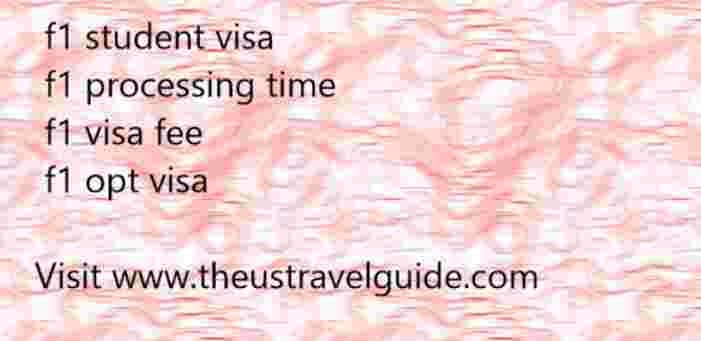
What are the student visas for USA?
You will need a F1 student visa if you would like to study in the United states of America as a full time student. There are two types of student visa. One is F1 visa which is for academic students and another one is M1 visa which is for non-academic students. These non-immigrant student visas are part of their Student and Exchange Visitor Program (SEVP). SEVP uses the Student and Exchange Visitor Information System (SEVIS) to keep record and track of foreign students.
F1 student visa
F1 visa are given to those who wants to study as a full time student in an accredited college, university, seminary, conservatory, academic high school, elementary school, or other academic institution or in a language training program.
F1 visa would allow you to enter the USA and study here as a full time student. People from around the world come to US on f1 visa and study in various colleges universities and schools.
F1 visa processing time
F1 visa processing time is highly depends upon your school or institution where you are going to take admission. It means f1 processing time depends upon i-20 processing time. Some schools may tell you it will take two or three weeks to process i-20 and some schools may take four to five weeks to process i-20. For more information you should contact your school about i-20 processing.
Once you submit DS160 form to US embassy. It may take up to 2 months for US consulate to get back to you. Then they will schedule f1 visa interview within 2 or 3 weeks. It is again up to the US consulate officer and the number of pending applications.
So, my advised would be plan early and keep some buffer time for each process.
F1 Visa Fee
There is no visa fee but you have to pay I-901 SEVI fee. You need this receipt while you go for visa interview.
F1 OPT Visa
Once you take admission and spend some times in college and with college friends. Then you may not need to go through this topic. You will become expert in this topic :). There are lots of foreign students here from all around the world. Your seniors and friends will make you a master in this field. So chill and enjoy even if you do not understand much about OPT now.
OPT: Optional Practical Training is temporary employment that is directly related to an F-1 student’s major area of study. All the eligible students can apply for up to 12 months of OPT employment authorization. You can apply OPT before completing your academic studies which is called pre-completion or after completing your academic studies which is called post-completion. If You apply before completing your academic then all periods of pre-completion OPT will be deducted from the available period of post-completion OPT.
Pre-completion OPT:
Once you get yourself enrolled at at a college, university, conservatory, or seminary that has been certified by the U.S. Immigration and Customs Enforcement (ICE) Student and Exchange Visitor Program (SEVP) to enroll F-1 students. Your enrollment should be full time basis and for one full academic year.
If you are able to fulfill these condition then you will be authorized to participate in pre-completion OPT. When school is in session, you can work part time i.e 20 hours or less per week. When School is not in session, you can work as a full time.
Post-completion OPT:
This is straightforward. Once you complete your studies from ICE and SEVI approved institutions, you may apply to participate in post-completion OPT. You can work as a part timer or full time employee. If you have already participated in pre-completion OPT. USCIS will deduct that exact amount of time from your post-completion OPT authorization period.
For example, if you have already participated in 8 months of pre-completion OPT. You would be left with only 4 months of post-completion OPT.
Is it worth to study in the USA?
According to me it is worth. Other thing you have consider is whether you want to work in USA or go back to your home country. If you want to work here you have 3 years of OPT as explained above. While working on OPT you may apply H1b if you want to stay in US. If you get H1b which you will get most probably then you can enjoy in US.
Even if you do not get H1b visa, then US degree will be beneficial for you to secure a good job in your home country. Yes it is expensive but if you can manage school fee somehow then you can manage living expenses by yourself working par time job.
Where can I use OPT?
You can use your OPT for any employer. But your work should be directly related to your major area of study. Your employer should be qualified under OPT standards. After the OPT EAD card is issued, training work can be completed anywhere in the U.S. Your employer should ICE and SEVI approved.
Is it hard to find a job on OPT?
Every good thing comes with some hard work. Finding job on OTP or f1 visa status is not that hard in USA. There are thousands of consultancies who prefer OPT over H1b now a days. This is because they do no have to go through all h1b visa problems that Trump administration has created now a days. In any case finding a job in USA is easier than in India, if you are from India. I do not have much idea about other countries.
To know about f1 visa requirements and f1 visa interview documents. Click here.
Click here for Latest Sample F1 visa interview questions and answers.


